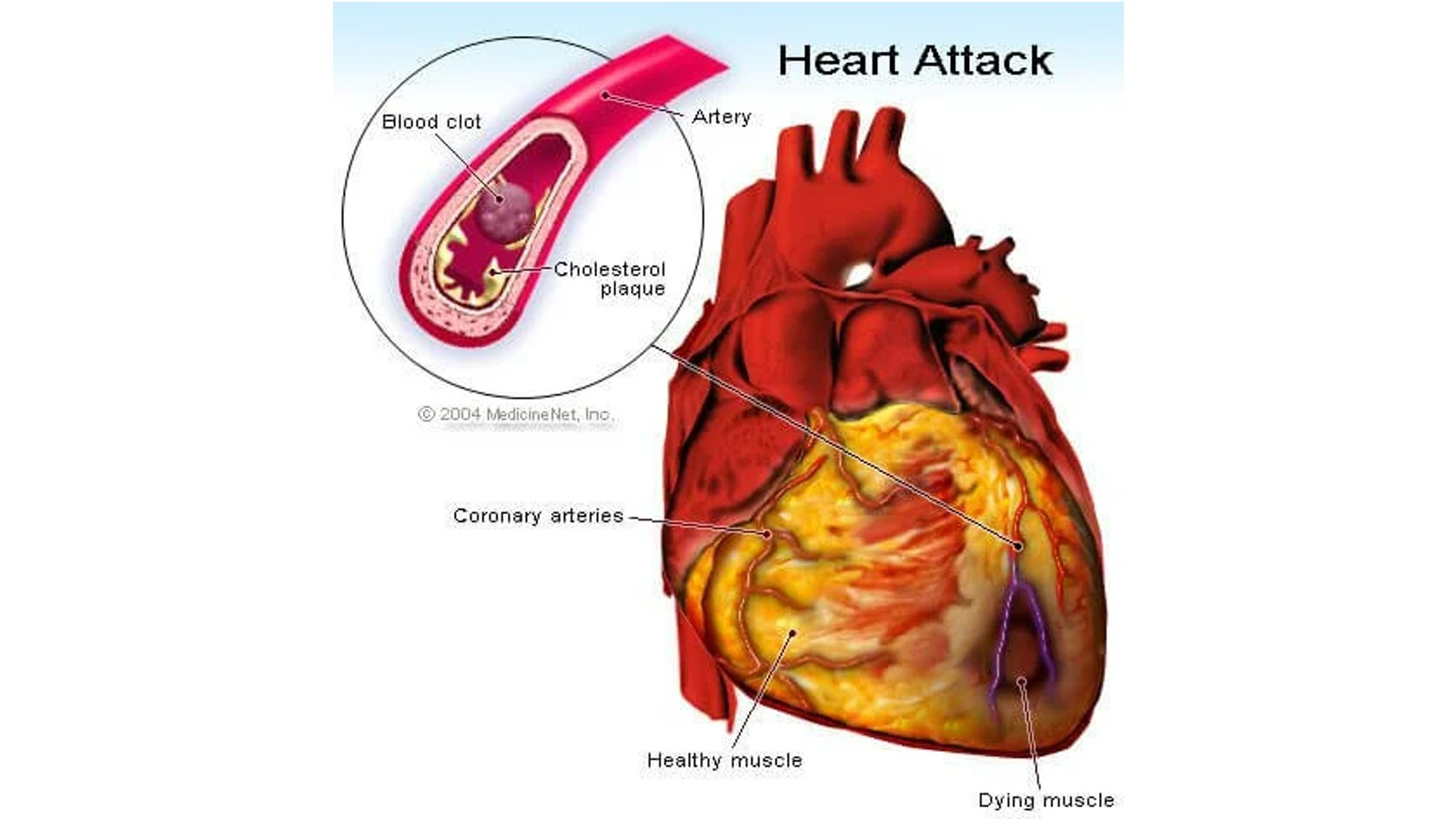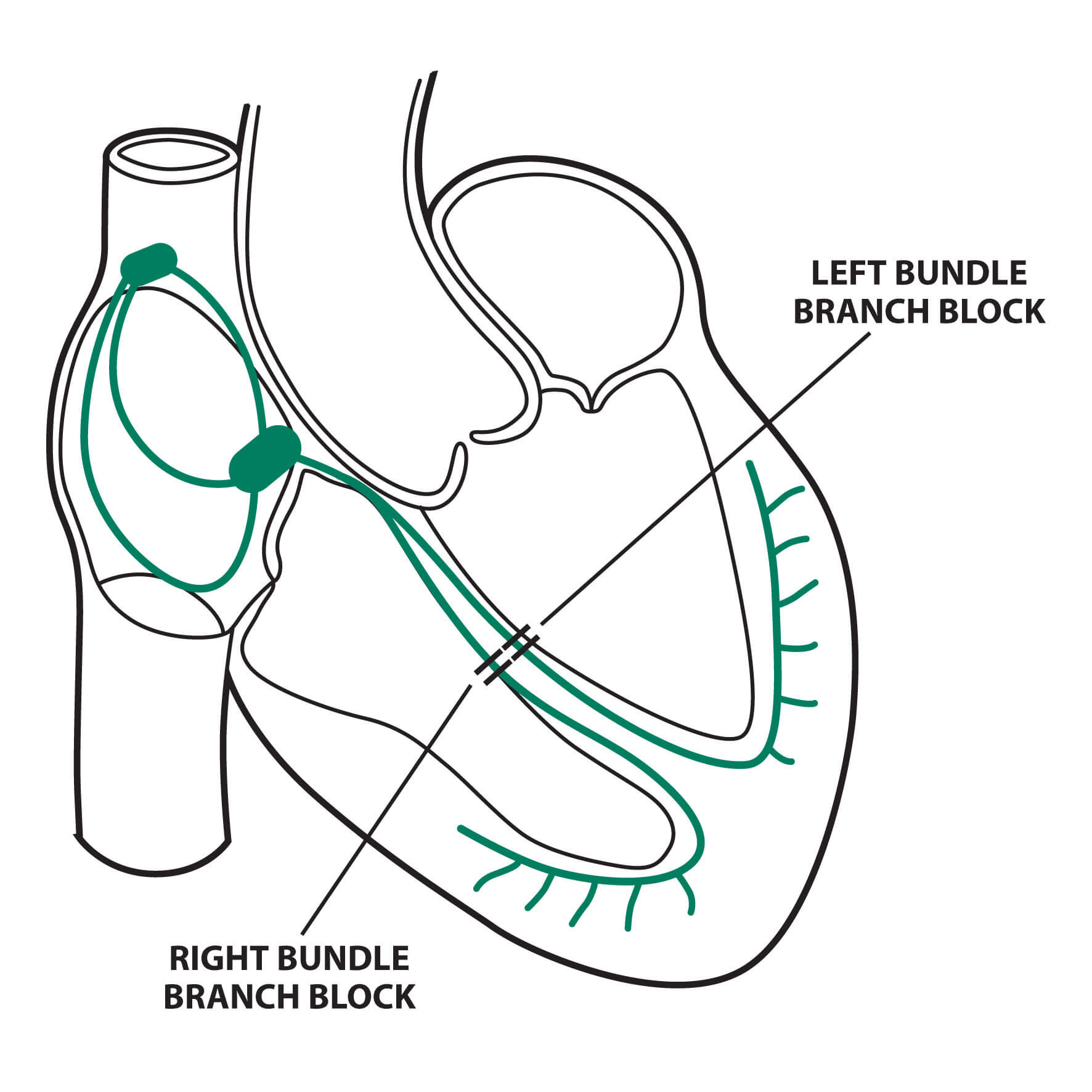Definisi
Cardiorespiratory arrest, atau yang dikenal juga sebagai henti jantung paru, merupakan kondisi hilangnya fungsi jantung, pernapasan, dan kesadaran secara tiba-tiba. Keadaan ini biasanya diakibatkan oleh gangguan pada sistem kelistrikan jantung sehingga mengganggu aktivitas pemompaan jantung dan menghentikan aliran darah dalam tubuh. Ketika jantung berhenti memompa darah, otak akan mengalami kekurangan oksigen akibat pasokan darah yang berhenti secara tiba-tiba. Hal ini akan menyebabkan penderita jatuh pingsan dan berhenti bernapas.
Cardiorespiratory arrest tidak sama dengan serangan jantung. Cardiorespiratory arrest terjadi ketika ritme pompa jantung yang normal terganggu oleh impuls (sinyal aliran listrik) jantung yang cepat dan tidak normal. Sementara itu, serangan jantung terjadi ketika terdapat sumbatan pada pembuluh darah yang menyuplai darah dan oksigen ke jantung, sehingga aliran darah ke jantung jadi terganggu. Namun, terkadang serangan jantung dapat memicu gangguan impuls yang menyebabkan cardiorespiratory arrest.
Cardiorespiratory arrest termasuk salah satu kegawatdaruratan medis. Jika tidak segera diobati, kondisi ini dapat menyebabkan kematian. Keberlangsungan hidup pasien akan bergantung pada perawatan medis yang cepat dan tepat.
Penyebab
Dalam keadaan normal, sistem kelistrikan jantung akan mengirimkan impuls yang mengatur setiap detak jantung. Pada cardiorespiratory arrest, impuls yang abnormal dan cepat bisa mengganggu impuls normal yang mengatur detak jantung secara tiba-tiba. Gangguan pada tersebut dapat membuat jantung berhenti berdetak. Ketika jantung Anda tidak berdetak, maka aliran darah ke seluruh tubuh akan terganggu.
Penyebab umum cardiorespiratory arrest adalah irama jantung yang tidak normal (aritmia), aritmia yang paling umum menyebabkan cardiorespiratory arrest adalah aritmia di bilik jantung (ventrikel). Impuls listrik yang cepat dan tidak menentu menyebabkan ventrikel Anda hanya bergetar saja, namun tidak memompa darah (fibrilasi ventrikel).
Beberapa penyebab yang dapat menimbulkan cardiorespiratory arrest, antara lain:
Penyebab di Jantung
Cardiorespiratory arrest dapat terjadi pada orang yang tidak memiliki riwayat penyakit jantung yang diketahui sebelumnya. Namun, aritmia yang bersifat mengancam jiwa biasanya berkembang pada seseorang dengan kondisi jantung yang sudah ada sebelumnya, tetapi tidak terdiagnosis, seperti:
- Gangguan arteri koroner, yaitu kondisi di mana pembuluh darah jantung menjadi tersumbat oleh gumpalan lemak dan endapan lainnya, sehingga aliran darah ke jantung akan berkurang
- Serangan jantung, seringkali terjadi sebagai akibat dari penyakit arteri koroner yang parah, dan dapat memicu timbulnya cardiorespiratory arrest
- Pembesaran jantung, yaitu kondisi ketika dinding otot jantung meregang dan membesar atau menebal yang sering menyebabkan timbulnya gangguan irama jantung
- Penyakit katup jantung, seperti kebocoran atau penyempitan katup jantung dapat menyebabkan terjadinya peregangan atau penebalan pada otot jantung, dan meningkatkan risiko terjadinya aritmia
- Penyakit jantung bawaan, bila cardiorespiratory arrest terjadi pada anak-anak atau remaja, bisa jadi dikarenakan adanya penyakit jantung bawaan
- Masalah kelistrikan di jantung dapat memicu cardiorespiratory arrest
Penyebab di Sistem Pernafasan
- Sumbatan jalan napas
- Emboli paru
- Kelemahan otot pernapasan
Penyebab Lain
- Penggunaan obat-obatan tertentu atau obat-obatan terlarang
- Cedera (trauma) berat dengan kehilangan banyak darah
- Kadar kalium atau magnesium yang tidak normal
- Kekurangan oksigen
- Olahraga yang intens, yang dapat memicu serangan jantung pada orang dengan riwayat penyakit jantung yang sudah ada
Faktor Risiko
Beberapa faktor yang dapat meningkatkan risiko terjadinya cardiorespiratory arrest antara lain:
- Memiliki riwayat serangan jantung atau riwayat cardiorespiratory arrest sebelumnya
- Memiliki riwayat sakit jantung pada diri sendiri atau keluarga, seperti:
- Penyakit arteri koroner
- Gangguan irama jantung
- Kelainan jantung bawaan
- Gagal jantung
- Kardiomiopati
- Berusia di atas 45 tahun untuk pria, atau di atas 55 tahun untuk wanita
- Berjenis kelamin laki-laki
- Tekanan darah tinggi
- Kadar kolesterol darah tinggi
- Obesitas
- Menderita diabetes
- Menderita penyakit ginjal kronis
- Merokok
- Memiliki gaya hidup yang tidak aktif
- Menggunakan obat-obatan terlarang
- Ketidakseimbangan nutrisi, seperti kadar kalium atau magnesium yang rendah
Gejala
Cardiorespiratory arrest umumnya terjadi secara tiba-tiba dan mendadak. Gejala yang biasanya terjadi meliputi:
- Tiba-tiba pingsan atau tidak sadarkan diri
- Tidak ada denyut nadi
- Tidak bernafas
Terkadang dapat terjadi beberapa gejala lain yang mendahului cardiorespiratory arrest, seperti:
- Rasa tidak nyaman di dada
- Sesak napas
- Kelemahan di seluruh tubuh
- Jantung yang berdebar cepat
- Pusing
- Sakit perut
Diagnosis
Cardiorespiratory arrest merupakan suatu kegawatdaruratan medis yang terjadi secara mendadak, sehingga diagnosis cardiorespiratory arrest harus dilakukan secara cepat. Cardiorespiratory arrest biasanya dapat ditegakkan berdasarkan gejala yang terjadi, yaitu penurunan kesadaran atau pingsan tiba-tiba dan disertai tidak terabanya nadi serta tidak ada napas.
Terdapat beberapa pemeriksaan penunjang yang dapat membantu memberi tahu apakah Anda berisiko mengalami cardiorespiratory arrest. Pemeriksaan ini juga dapat membantu mencari penyebab terjadinya cardiorespiratory arrest, tetapi pemeriksaan ini biasanya dilakukan setelah keadaan gawat darurat sudah teratasi. Pemeriksaan tersebut meliputi:
- Kateterisasi jantung, yaitu prosedur untuk menilai fungsi jantung dengan memasukan semacam kabel ke dalam pembuluh darah jantung
- Ekokardiogram, yaitu pemeriksaan yang menggunakan gelombang suara untuk menunjukkan pergerakan jantung
- Ekokardiogram dengan exercise stress, yaitu pemeriksaan dengan mengevaluasi gerakan jantung selama melakukan aktivitas yang dipantau
- Elektrokardiogram (EKG), yaitu tes untuk merekam aktivitas listrik jantung
- Studi elektrofisiologi, yaitu evaluasi terperinci dari aktivitas listrik di jantung Anda
- Magnetic Resonance Imaging (MRI), yaitu pemindaian yang menggunakan magnet dan gelombang radio untuk menghasilkan gambar jantung
- Pemindaian Multigated Acquisition (MUGA), yaitu pemeriksaan yang menguji fungsi jantung menggunakan zat radioaktif
Tata Laksana
Cardiorespiratory arrest merupakan suatu kondisi gawat darurat sehingga tatalaksana dalam beberapa menit pertama dapat menyelamatkan nyawa orang tersebut, sangat penting untuk bertindak cepat. Bila seseorang menunjukkan tanda-tanda cardiorespiratory arrest, Anda harus menghubungi atau meminta bantuan layanan medis darurat, jika memungkinkan minta bantuan orang lain untuk menghubungi nomor gawat darurat.
Resusitasi Jantung Paru (RJP)
Periksa apakah orang yang tidak sadar itu bernapas atau tidak, Anda bisa melakukannya dengan melihat gerakan dadanya. Bila orang tersebut tidak sadar, tidak bernapas, dan tidak teraba nadinya, bisa segera dilakukan resusitasi jantung paru (RJP) dengan tangan. Letakkan kedua tangan yang saling menindih di tengah dada penderita dan tekan dengan kuat sebanyak 100-120 kali per menit, dan biarkan dada terangkat sepenuhnya di antara penekanan. Tindakan RJP ini dapat membuat darah dan oksigen mengalir ke organ dan otak untuk sementara waktu, dilakukan hingga bantuan medis darurat tiba atau tersedia AED (Automated External Defibrilator).
Bila di lokasi kejadian terdapat alat defibrilator eksternal otomatis (Automated External Defibrilator, AED), bisa menggunakan alat ini untuk memberikan kejutan listrik pada jantung. Kejutan listrik yang diberikan akan terkontrol secara otomatis untuk orang dengan gangguan irama jantung yang berbahaya. Alat ini tidak akan melepaskan kejutan listrik kecuali terdeteksi irama jantung yang tidak normal pada orang tersebut.
Perawatan Lanjutan
RJP adalah salah satu bentuk tatalaksana darurat untuk cardiorespiratory arrest. Jika Anda selamat dari cardiorespiratory arrest, dokter mungkin akan memulai dengan satu atau lebih perawatan berikut untuk mengurangi risiko serangan lain:
- Obat-obatan yang dapat menurunkan tekanan darah tinggi dan kolesterol
- Pembedahan untuk memperbaiki pembuluh darah atau katup jantung yang rusak, tindakan ini juga dapat memotong atau menghilangkan penyumbatan di dalam pembuluh darah
- Olahraga yang dapat meningkatkan kebugaran dan kesehatan jantung
- Perubahan pola makan agar dapat membantu Anda menurunkan kolesterol
Komplikasi
Jika tidak diatasi dengan cepat dan tepat, cardiorespiratory arrest dapat menyebabkan terjadinya kematian. Karena terjadi kekurangan oksigen ke otak selama cardiorespiratory arrest, Anda mungkin mengalami efek jangka panjang pada otak Anda, seperti:
- Perubahan kepribadian
- Masalah dengan memori
- Kelelahan
- Pusing atau gangguan keseimbangan
- Afasia/disfasia (masalah dalam berbicara dan bahasa)
- Mioklonus (gerakan yang tidak diatur secara sadar)
- Cedera otak permanen
Pencegahan
Cara mencegah cardiorespiratory arrest adalah dengan mengurangi risiko dengan melakukan pemeriksaan rutin, skrining penyakit jantung, dan menjalani gaya hidup jantung sehat, seperti:
- Perhatikan apa yang Anda makan, Anda harus mengonsumsi banyak sayuran, buah-buahan, biji-bijian, dan protein tanpa lemak
- Turunkan berat badan hingga mencapai berat badan ideal
- Kelola stres
- Aktif bergerak, lakukan olahraga 150 menit seminggu setelah dokter Anda memperbolehkannya, dan jangan duduk terlalu lama
- Berhenti merokok
Kapan Harus ke Dokter?
Segera kunjungi IGD jika Anda mengalami salah satu dari tanda dan gejala berikut:
- Nyeri dada atau ketidaknyamanan di dada
- Jantung yang berdebar-debar
- Detak jantung cepat atau tidak teratur
- Mengi yang tidak dapat dijelaskan
- Sesak napas
- Pingsan atau hampir pingsan
- Sakit kepala hebat atau pusing
Jika Anda melihat seseorang yang tidak sadarkan diri dan tidak bernapas dengan normal, lakukan hal berikut:
- Hubungi bantuan medis darurat, bila Anda memiliki akses langsung ke telepon, hubungi sebelum memulai RJP
- Lakukan RJP. Periksa pernapasan orang tersebut dengan cepat, jika orang tersebut tidak bernapas dengan normal, mulailah RJP. Tekan dengan keras dan cepat di dada orang tersebut, dengan kecepatan 100 hingga 120 kali per menit. Jika Anda telah terlatih dalam RJP, periksa jalan napas orang tersebut dan berikan napas bantuan setelah setiap 30 kali penekanan. Jika Anda belum terlatih, lanjutkan saja penekanan dada. Biarkan dada naik sepenuhnya di antara penekanan. Terus lakukan hal ini sampai AED tersedia atau bantuan darurat tiba.
Mau tahu informasi seputar penyakit lainnya? Cek di sini, ya!
- dr Hanifa Rahma
British Heart Foundation. Cardiac Arrest. (2019). Retrieved 30 Maret 2022, from https://www.bhf.org.uk/informationsupport/conditions/cardiac-arrest
Cardiac Arrest. (2021). Retrieved 30 Maret 2022, from https://my.clevelandclinic.org/health/diseases/21736-cardiac-arrest
Kandola, Aaron. What is Cardiac Arrest and What to Do. (2019). Retrieved 30 Maret 2022, from https://www.medicalnewstoday.com/articles/cardiac-arrest
Macon, Brindles Lee. Cardiac Arrest. (2017). Retrieved 30 Maret 2022, from https://www.healthline.com/health/cardiac-arrest
Sharabi, Alaa F., et al. Cardiopulmonary Arrest in Adults. (2022). Retrieved 30 Maret 2022, from https://www.ncbi.nlm.nih.gov/books/NBK563231/
Steinbaum, Suzanne R. Cardiac Arrest: What You Should Know. (2019). Retrieved 30 Maret 2022, from https://www.webmd.com/heart-disease/ss/slideshow-cardiac-arrest-overview
Sudden Cardiac Arrest. (2021). Retrieved 30 Maret 2022, from https://www.mayoclinic.org/diseases-conditions/sudden-cardiac-arrest/symptoms-causes/syc-20350634












